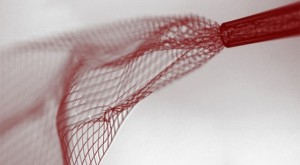Brain Covered by Injectable Neuro-Mesh to Control Neurons
 In a new study, researchers developed a thin mesh made of polymer that can be embedded along with dozens and even hundreds of nano-scale electronic devices into the brain. Together, they are injected safely into the brain’s mammalian surface.
In a new study, researchers developed a thin mesh made of polymer that can be embedded along with dozens and even hundreds of nano-scale electronic devices into the brain. Together, they are injected safely into the brain’s mammalian surface.
The study was performed on laboratory mice and shown to be readily accepted by neural tissue. After being injected, a network of small electronics is used for wiring up full regions of the brain or individual neurons. If testing can be confirmed through additional studies, there will be opportunities to treat a broad range of brain disorders.
According to experts, the outcome of this new technology is so incredible that for brain science, it is ranked as the most advanced in history. At this point, only laboratory mice have been used but researchers believe the human brain will respond in much the same way.
The process of injecting this mesh involves a small hole being drilled into the top portion of the skull through which an extremely tiny syringe is inserted. Through this syringe, the rolled up net made of soft polymer is embedded. As the mesh exits the tip of the needle, it unrolls, followed by covering the targeted area of the brain. As the mesh settles in, it fills gaps and contours the surface.
At the point where threads of the net intersect, a small electrode used for monitoring activity or transistor that creates activity was embedded by researchers. As a result, after the mesh has been implanted into the brain, the net remains active but also allows long-term control over that particular area of brain tissue.
However, the primary potential of this technological breakthrough has to do with the research sector. Being able to embed a static sensor net in the brain makes it possible for neurons in specific regions to be tracked and retested repeatedly to check activity of multiple regions of the brain simultaneously.
Earlier research using test tube cultures proved that mammalian neurons grew both on and around these nets for a period up to weeks. At the same time, it was identified that cells treat the unique polymer net similar to that of natural protein structures built.
Throughout testing, all laboratory mice involved in the study stayed completely brain healthy for more than one month after the mesh was injected. Although researchers do not know how long-term the mice would stay healthy, the outcome of the study is impressive.
If this net is proven to be safe long-term, there is a really good chance that humans who struggle with symptoms associated with brain disorders like Parkinson’s disease would benefit. This discovery is beyond amazing and researchers feel very optimistic about its future.
